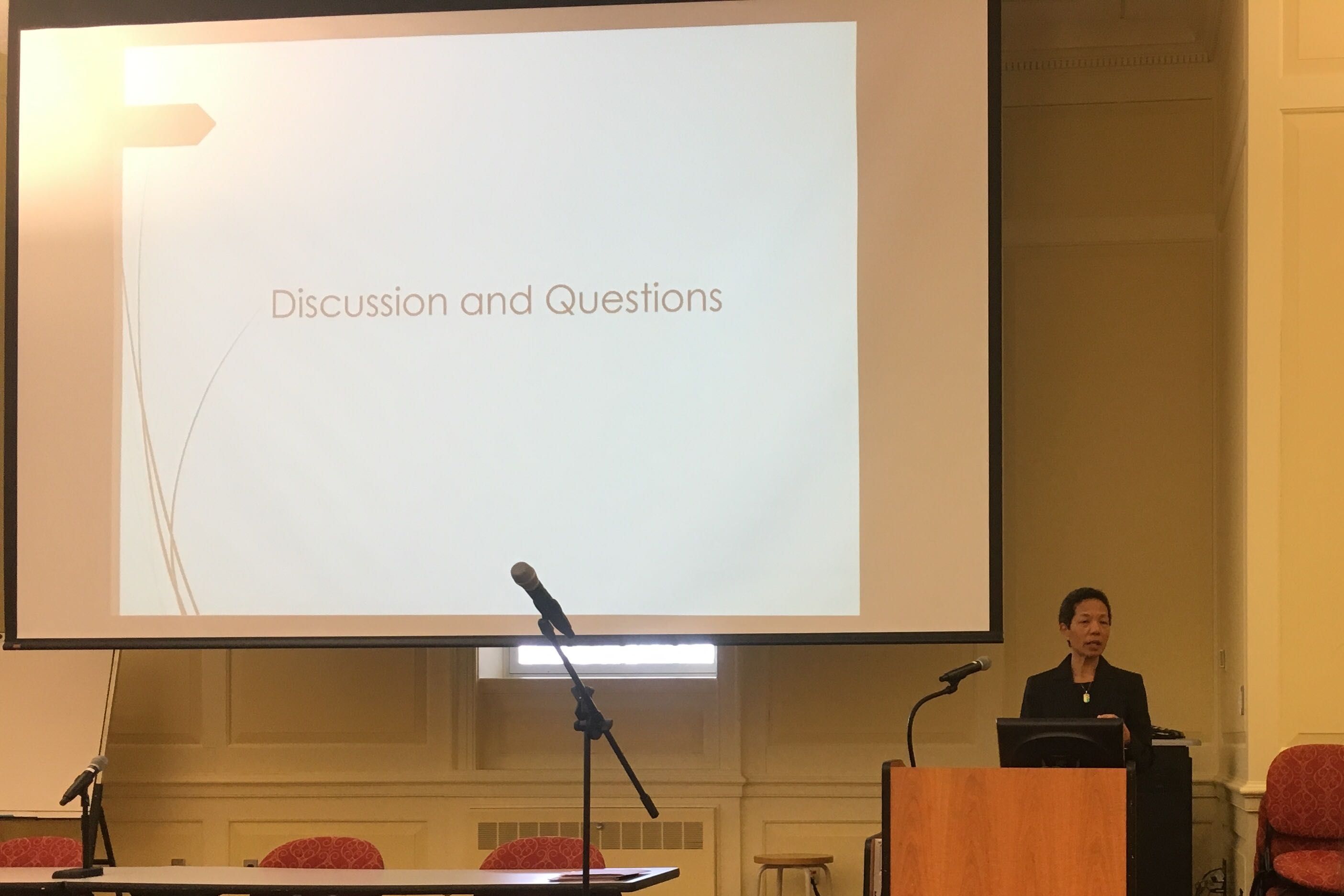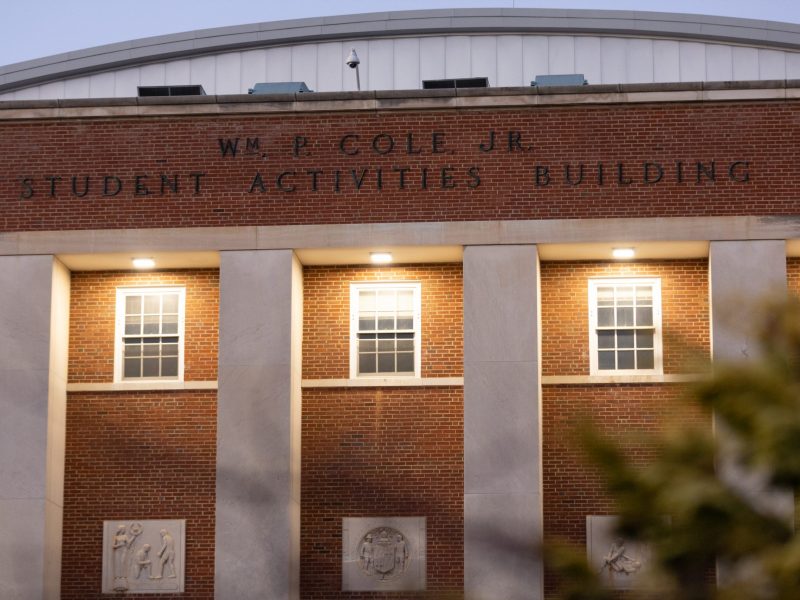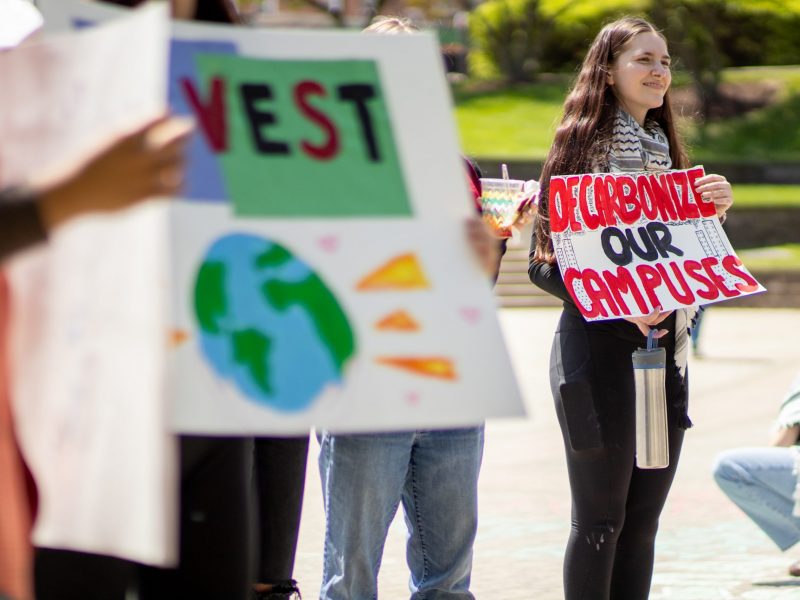Georgina Dodge told members of the University of Maryland community Tuesday that she’s a “firm believer in the concept of linked fates.”
To illustrate this concept, Dodge, one of four finalists for the newly created diversity and inclusion vice president position, brought up the practice of using a canary in a coal mine to signal impending danger.
“What happens to the least of us, happens to all of us,” Dodge told a crowd of about 50 people in McKeldin Library. “We need to be cognizant of that metaphor without sacrificing the canary.”
The forum, which had mostly faculty attendees, served as a chance for participants to learn about Dodge’s background and plans for encouraging diversity and inclusion at this university if she is hired to fill the position.
Dodge, who now serves as chief diversity officer at Bucknell University, welcomed the opportunity to visit this university and address the faculty and staff — but she emphasized that she didn’t come to the campus “begging and seeking for a job.”
Through conversations with the committee, Dodge said she learned that there are challenges at this university that need to be confronted.
“I think it’s important that this is a good match for both of us,” she said. “There needs to be the right leader in place to address some of these challenges, and it’s important we find that for you.”
This university has been facing a spike in reported hate bias incidents. Just this academic year, there have been 22 reported incidents, including two reports in the last month involving swastikas etched in campus bathrooms, according to the school’s hate bias report log.
In late 2016, white nationalist posters were discovered in several academic buildings throughout the campus. Then, 2nd Lt. Richard Collins, a black Bowie State University student, was fatally stabbed on the campus while waiting for an Uber in May 2017.
About two months after Collins’ killing, the university announced its plans for the diversity and inclusion vice president position. This past November, it released its external review of diversity and inclusion measures, which recommended that former Chief Diversity Officer Roger Worthington be promoted to this role. But before he could accept the position, Worthington resigned over the summer, later criticizing the administration for not fully supporting him.
[Read more: First finalist for UMD’s diversity and inclusion VP addresses students, faculty]
If Dodge takes on the role, she said she’d work toward developing a united identity to enhance feelings of belonging among members of the community, as well as encouraging cohesiveness in diversity efforts among units and departments across the decentralized campus.
Dodge said she would also move to expand fundraising efforts, especially to enhance the university’s ability to financially assist its students. She believes this action has become crucial as public funding has dried up for higher education.
After Dodge finished her presentation, a faculty member asked her how she’d encourage change within the administration, particularly when it requires an abundance of resources.
“How did you approach the situation? How did you go about convincing a reluctant administration?” asked Patricio Korzeniewicz, the chair of the sociology department.
Dodge said that while it’s important to impress on administrators the urgency of the situation at hand, it’s necessary to show them how they’d benefit from the proposed reform in order to be taken seriously. In Dodge’s experience, this approach has spurred university leaders to take action.
Lucy Dalglish, the dean of the journalism school and the search committee’s co-chairwoman, asked Dodge to describe a time when she had to respond to a charged incident involving diversity on a campus where she was working.
“Tell us a horror story,” Dalglish told Dodge.
Dodge obliged, recounting the time a visiting artist had erected an effigy of someone dressed in Ku Klux Klan robes at the University of Iowa’s main entrance while she served as its chief diversity officer.
Although the artist had meant for the display to showcase his feelings of solidarity with the African-American community in the United States as it dealt with displays of racial hatred, Dodge said the piece of art was terror-inducing for faculty and staff.
A group of students marched to the president’s office, and police responded to the protest, flashing the lights on their squad cars. Tensions quickly ramped up and soon, the students and officers were yelling back and forth.
[Read more: UMD to hold open forums for diversity and inclusion VP finalists]
Dodge was then in a meeting across campus, but went running to the scene when she heard what was happening. She calmed the students down, and gathered them in the university’s student union, where she encouraged them to talk about what they were feeling.
And for over two and a half hours, Dodge said, she listened as members of the community expressed fear, anger and pain — not just over the day’s display but about things they had experienced during their time at Iowa and throughout high school.
Ultimately, Dodge and the students worked with the president to develop a plan to address certain issues at the university. But for a good 15 minutes after that meeting, Dodge said she just cried.
“The amount of pain and agony that we inflict on people, and then hold them in an environment where they’re competing to be successful, is a little bit ridiculous,” she said. “That’s what fuels me in this work. Inclusion is not just something to talk about. Inclusion is really necessary to be successful in our lives as human beings.”
The fourth finalist for the vice president position will speak at a forum in McKeldin on Thursday.



